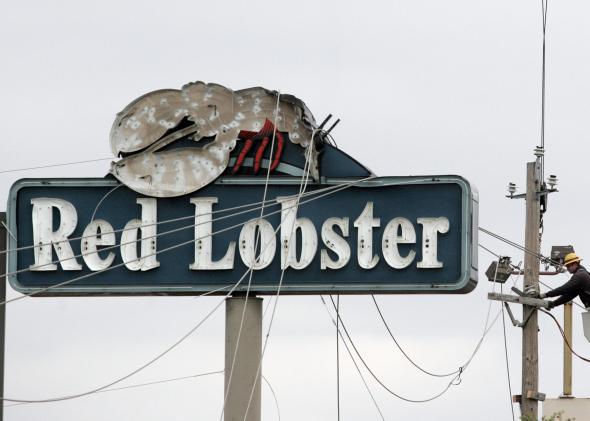Darden Restaurants, the chain dining empire, announced today that it wants to spin off and sell its ailing Red Lobster brand of seafood-themed restaurants.
This is best thought of as a countermove to a proposal from Barington Capital Group, which has taken a 2 percent stake in Darden and is agitating to break the company up into three pieces. This slide from Barington’s proposal shows more or less what they want to do:
Basically, the idea is to have two companies that operate restaurants and one company that owns real estate. Of the restaurant-operating companies, one will house Olive Garden and Red Lobster, which together represent the vast majority of Darden’s revenue but which seem to be in decline (“mature” as Barington calls them). The other company will house Darden’s other brands, which are generally smaller and more upscale. Both the Darden real-estate entity and the Darden Mature entity will feature “high dividend payout” while the relatively small Darden Higher Growth will not.
Reading between the lines, the fear here seems to be that Olive Garden and Red Lobster are going to turn into loss-makers soon and Barington is afraid that profits at the smaller restaurants will be used to cover those losses. The proposal pays lip service to the idea of a management-led turnaround at the mature brands, but the basic idea of the proposal is to safeguard shareholder interests in the event of failure. They’ll pay out high dividends for as long as they last, and the other brands will be safely sequestered away to grow on their own.
It’s a classic financial engineering proposal to maximize shareholder value and not really a proposal with strong ideas about Red Lobster and Olive Garden.
The management countermove to sell off Red Lobster could be a step down the Barington path, but it could also work as a kind of triage. By amputating just below the knee, maybe the Olive Garden stump can be saved.
